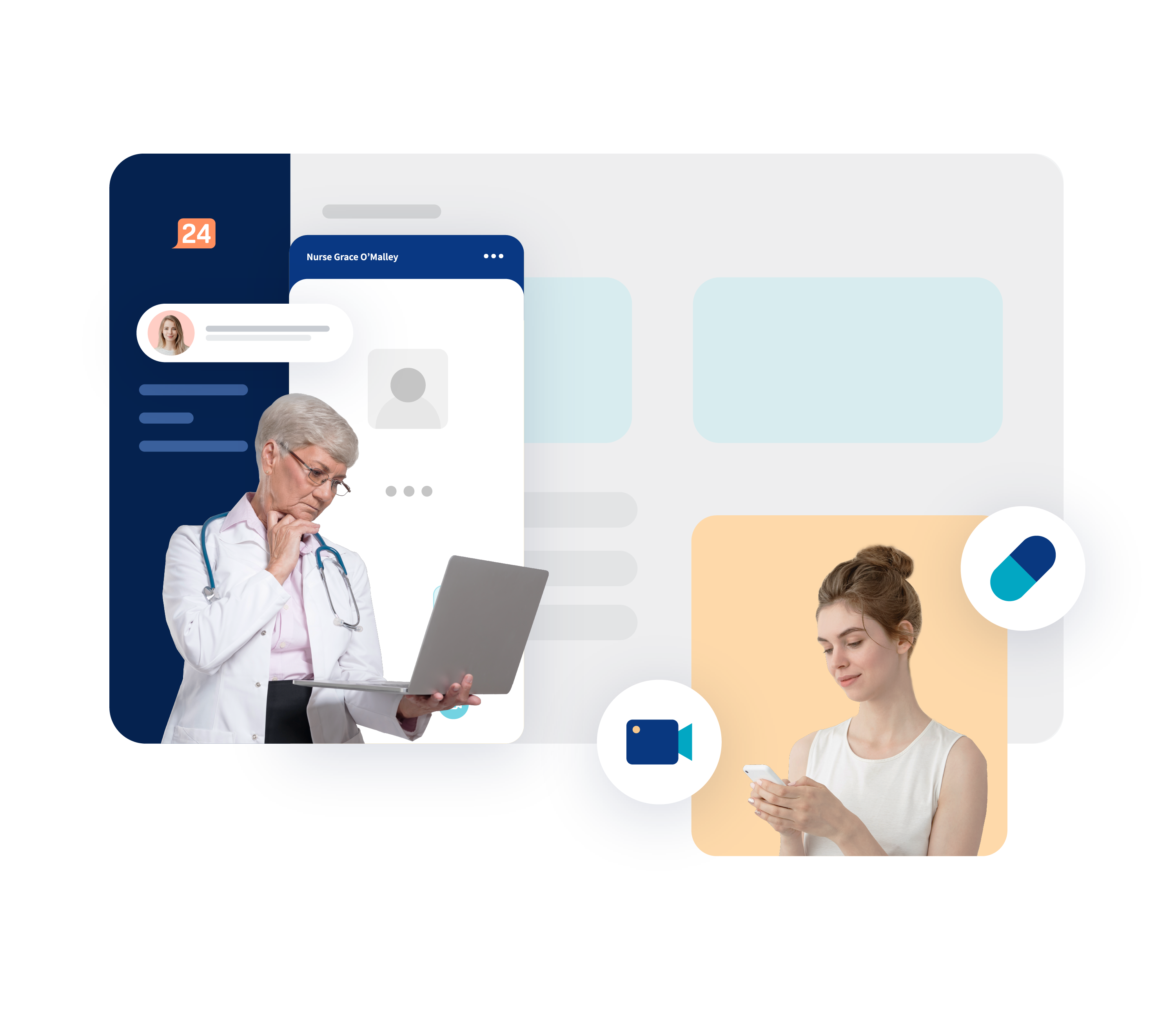Consultation
Reduce the amount of non needed appointment through efficient communication and nurturing of meaningful relationships.
-between caregivers and patients
No unnecessary appointments, well prepared caregivers and engaged patients
Healthcare technology has transformed how we access and manage medical care. Yet, the personal touch and intuitive understanding provided by in-person interactions remain unmatched. With Consultations you can boost convenience, prioritise the impactful physical care and make sure caregivers feel well prepared before their appointments.
Build relationships
At the core of healthcare, building robust patient-caregiver relationships thrives on effective communication. Our solution redefines interaction, offering efficient channels for seamless connection. Real-time updates, secure messaging, and easy information sharing converge to create a collaborative environment.
Collaborate
Caregivers can also invite other clinicians to participate in meetings, e.g., second opinions, both together with the patient or without. In these meetings, the invited guest can have the opportunity to access patient information and medical records.
Enhancing care through connectivity
Our Consultations feature not only facilitates efficient communication but also nurtures meaningful relationships between caregivers and patients, resulting in improved healthcare experiences.

Replace the unorganised phone queues with a prioritized and efficient system.
Patients seeking immediate assistance are directed to a sorted queue that ensures those in the most urgent need receive help first. This approach allows multiple patients to be managed simultaneously. Apart from the orderly prioritisation of cases, it offers an invaluable learning loop for healthcare professionals who can receive immediate feedback, enabling continuous improvement in patient care.
Scheduled digital appointments
With the capability for scheduled digital appointments, healthcare staff can effectively work remotely, providing a convenient and time-saving solution for patients.
This feature is particularly advantageous for individuals in rural areas who may have limited access to in-person healthcare services. It not only improves accessibility but also enhances the overall efficiency of healthcare delivery.
After a consultation is completed, creating confirmations with references to the visit becomes a seamless process. Responsibility can be smoothly transferred to a doctor, streamlining the workflow.
Based on this, the subsequent stages of care can be performed with increased efficiency.
These tools also facilitate collaboration with specialists even before a consultation is initiated, potentially allowing for the avoidance of unnecessary visits and optimising resource utilisation.
Asynchronous tools offer the possibility of maintaining an ongoing patient-provider relationship, ideal for scenarios like pregnancy or mental health.
Patients can easily reach out to their healthcare providers with a simple click, eliminating the need to book full appointments for minor inquiries.
When integrated as part of a comprehensive care plan (learn more about Pathways), these tools become an invaluable component. They also provide the option to send automatic reminders, such as medication alerts, promoting medical compliance and patient well-being.